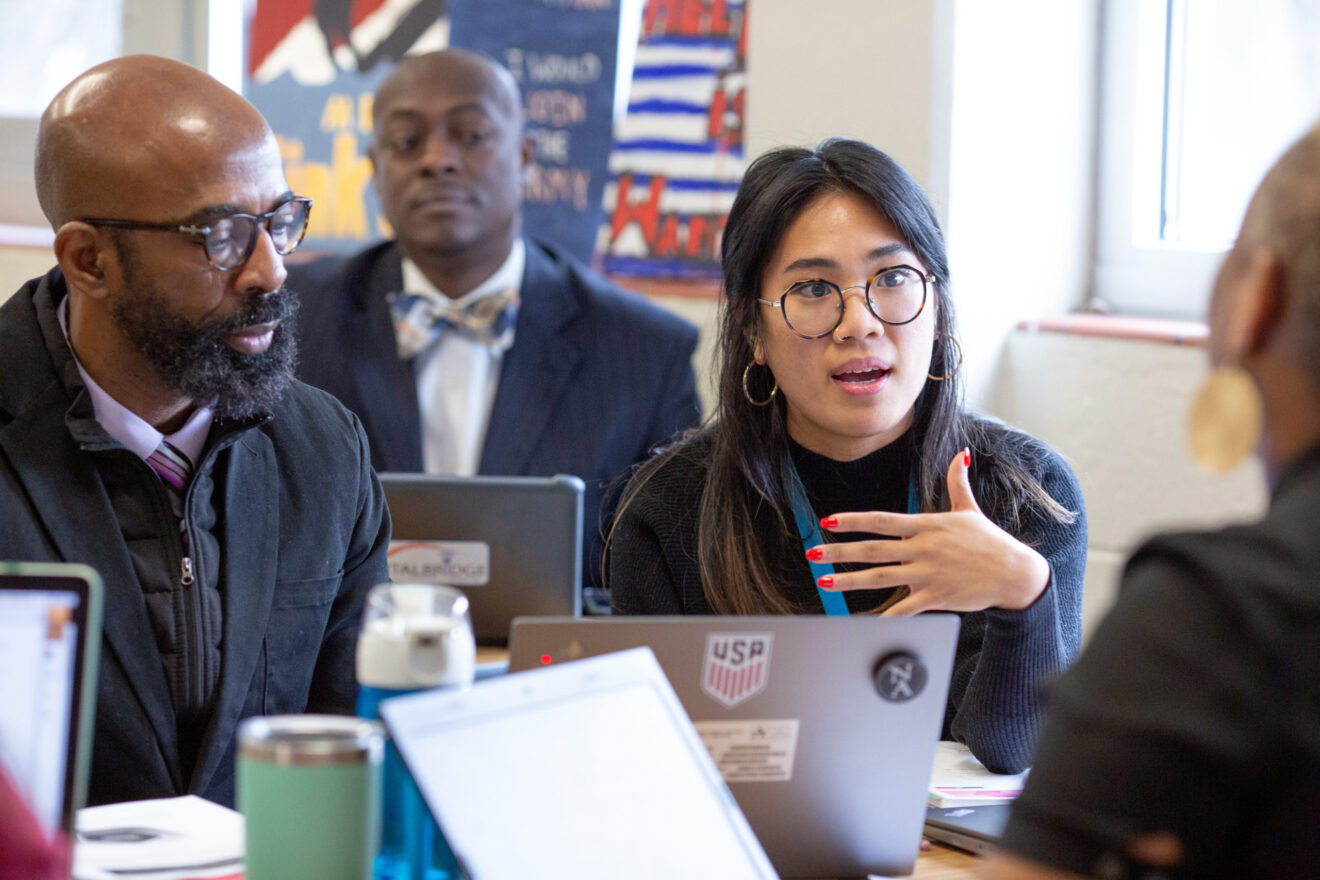Teachers, parents and students are slowly pivoting their attention away from summer vacation and getting back into the rhythm of school. This can trigger a range of emotions. For many, it comes with fresh ambitions and a renewed zeal for teaching or learning. For others, it can trigger that Sunday evening feeling of anxiety and apprehension. For most, it’s a blend of the two.

Along with those complex feelings, there is the burnout factor to consider. A Gallup poll of 12,319 US workers found that 52% of teachers report feeling burned out. Yet, this doesn’t just affect teachers; a disrupted learning experience has left many students feeling less motivated, too.
After the tumultuous events of the past two years, we must start thinking strategically about how to prevent burnout within the school community, and we cannot just rely on age-old self-care strategies. Research reveals that burnout is not simply a result of overwork and fatigue, but also of social isolation. It’s time we placed the community at the forefront of our collective anti-burnout efforts.
As we return to school this year, it’s critical that we build the long-term habits that encourage the strength, resilience and growth that every member of the school community deserves.
Audit bureaucracy
Before we ask what we can start doing this fall, it’s important to consider what we should stop doing. One key driver of burnout among staff is the sheer volume of paperwork that a teacher must complete. Too much bureaucracy is shown to contribute to the feelings of helplessness, cynicism and depletion in the profession.
From my experience as a teacher and an administrator, I know that the endless forms requiring completion ultimately serve the person or entity collecting the form, rather than the educators who are filling them out. A common example is the school improvement plan. Inflexible school improvement forms lead to inauthentic plans that are disconnected from teaching and learning and produce hundreds of pages that no one at the school actually reads. In contrast, short-cycle planning can result in the form of a living document that can be frequently updated. Such a collaborative document breeds the type of collaboration that a school needs. Ultimately, an empowering plan is shared, not dictated.
I suggest that teachers and school administrators conduct a thorough and brutal bureaucracy spring (or fall) clean. Start by asking: What bureaucratic processes are currently required? What is the goal? Is there another way to achieve the goal that allows us to work smarter? If the process is required, is there a way to streamline, digitize or automate the process? Whom is the current process serving, and how can we serve students and teachers better?
A thorough bureaucracy audit will give teachers that extra breathing room they so desperately need.
Maintain caring rituals
A powerful weapon to help avoid burnout in schools is the caring rituals that we bake into the school day. Caring rituals are the bedrock of a healthy and energized school environment. By caring rituals, I mean those daily habits that are performed for the sole purpose of fostering emotional maintenance.
One of the most valuable caring rituals in a school is the simple daily greet. By greeting each student as they enter the school premises each day, teachers can let their students know that they are accepted and wanted. Students inevitably come from a diverse set of personal and socio-economic circumstances. This simple act of validation compounds over time and can serve as a buffer against difficulties that a youth may face outside of school. Caring rituals can make a world of difference for the mental health of teachers too.
In addition to warm greetings, schools need to build a culture of showing appreciation. This includes regularly embedding opportunities to express gratitude and making it a habit to celebrate milestones (even small wins!) and recognize growth (every step forward is progress).
Seeing each community member’s whole self includes checking in to see how someone is doing, rather than waiting for someone who is in crisis to cry for help. Does every teacher and leader have at least one person who checks on them? Offers assistance or resources? Listens without judgment?
Caring rituals also include intentionally designed spaces and moments for building relationships. This includes valuing each other’s culture and identities, laughing together and sharing stories. Human beings need moments of rest and rejuvenation so that we don’t quit out of exhaustion. These moments also lay the foundation for our third pillar of community care: collaboration.
Cultivate collaboration
Collaboration is the best fuel when you want to avoid burnout. In schools, teachers can find themselves operating in a silo. Strong relationships minimize the fear of reaching out to fellow teachers for practical help, advice and most importantly, emotional support.
Structures of interpersonal support include collaborative problem-solving, peer feedback and co-planning. Examine the school’s processes and procedures, and consider ways to incentivize collaboration through the allocation of time and resources.
Collaboration in schools includes listening to students. When I’m working with schools, many teachers often ask, “Why aren’t students handing in work?” or “Why is this confusing my students?” My response is often “Have you asked them?”
Teachers can get lulled into believing that there are some invisible barriers between themselves and their students. Inviting feedback from both students and teachers can end up saving a lot of human energy on both sides. If you ask human questions, you receive human responses. Working with students to overcome your shared issues can foster that sense of support and community.
In addition to collaborating with students, we can’t forget about their parents and guardians. Families are an underutilized resource in sustaining community care; they provide a wealth of knowledge because they are their child’s first teacher. True collaboration with families requires listening, not just telling. As schools cultivate community care, I recommend the following tips for listening to diverse perspectives:
- Take care not to negate or discount experiences, especially those that differ from yours. When a community member shares a differing perspective, our first reaction might be, “That hasn’t been my experience!” And you’re right because it’s not your experience — it’s theirs. Refrain from negating their perspective and instead listen to learn more.
- Engage with invitation, not invasion. The question “Where are you from?” can be asked in a way that invites and connects or in a manner that invades and divides. Examine your intentions and consider how your comments and questions might be received.
- Recognize this is a learning experience. Growth often feels uncomfortable. Remember to breathe and lean into the discomfort. Resistance only makes the experience more difficult.
- Resist the urge to insert comparative marginalization. This is also known as the oppression Olympics. When an individual shares an experience where they felt harmed, avoid adding responses like, “Oh, that was just like the time when this happened to me.” While we may be trying to empathize, often our experience is not the same, and by inserting ourselves into their story, we stop listening. We listen to learn; we share to teach.
Marketing expert Dean Jackson famously said, “Listening is an art that requires attention over talent, spirit over ego, others over self.” Ultimately, listening to diverse perspectives helps us to see our communities with clearer vision. Cultivating community care requires listening, learning and building together.
This school year, we must remember that it is community care, not just self-care, that can prevent those feelings of exhaustion and depletion from festering. By building community-focused habits in the school community, we can make sure that school is a place that everyone looks forward to returning to each fall.
Nicole Tucker-Smith is a faculty member for Johns Hopkins University School of Education and a former teacher, supervisor of parent support services, principal and system-wide coordinator of PD, leading training for Baltimore County Public Schools. She also is the founder and CEO of Lessoncast, leads the Jumpstart PD Network and co-authored ”Supercharge Your Professional Learning: 40 Practical Strategies that Improve Adult Learning”.
Opinions expressed by SmartBrief contributors are their own.
_________________________
Subscribe to SmartBrief’s FREE email ASCD newsletter to see the latest hot topics in education. It’s among SmartBrief’s more than 250 industry-focused newsletters.
